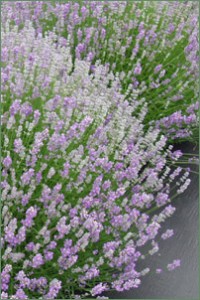No products in the cart.
 Keeping lavender plants in shape is one of the best ways of maintaining a healthy and vigorous bush. Pruning at Serenity Lavender begins when the plant is still in the greenhouse and continues once or twice a year for the whole life of the plant. The best time to prune is in the fall after bloom. Both the top and sides of the plant need to be pruned to generate new growth and prevent legginess or splitting of the branches. Some varieties have a sprawling habitat and a nice thick bush for a lavender plant is the optimal goal. As a general rule, the lavender plant may be pruned back by one third. Be sure to trim only the soft green branches and not get into the wood of the plant.
Keeping lavender plants in shape is one of the best ways of maintaining a healthy and vigorous bush. Pruning at Serenity Lavender begins when the plant is still in the greenhouse and continues once or twice a year for the whole life of the plant. The best time to prune is in the fall after bloom. Both the top and sides of the plant need to be pruned to generate new growth and prevent legginess or splitting of the branches. Some varieties have a sprawling habitat and a nice thick bush for a lavender plant is the optimal goal. As a general rule, the lavender plant may be pruned back by one third. Be sure to trim only the soft green branches and not get into the wood of the plant.
In the springtime pruning may be required to regenerate growth after a harsh winter. Cut back any dead wood until you see green in the stems. If there has been a lot of winter damage it may be wise to prune in stages over a number of years to slowly bring the plant back to its vibrant self. Although the plants sold at Serenity Lavender are suitable Zones 4-5 (we are zone 6a), winter survival is influenced by location, plant size, mulch type, plant cover and of course temperature.
Otherwise, pruning your Serenity Lavender plant in the spring should be minimal (only on the sides), if any at all, to allow for a full flowering show in July.